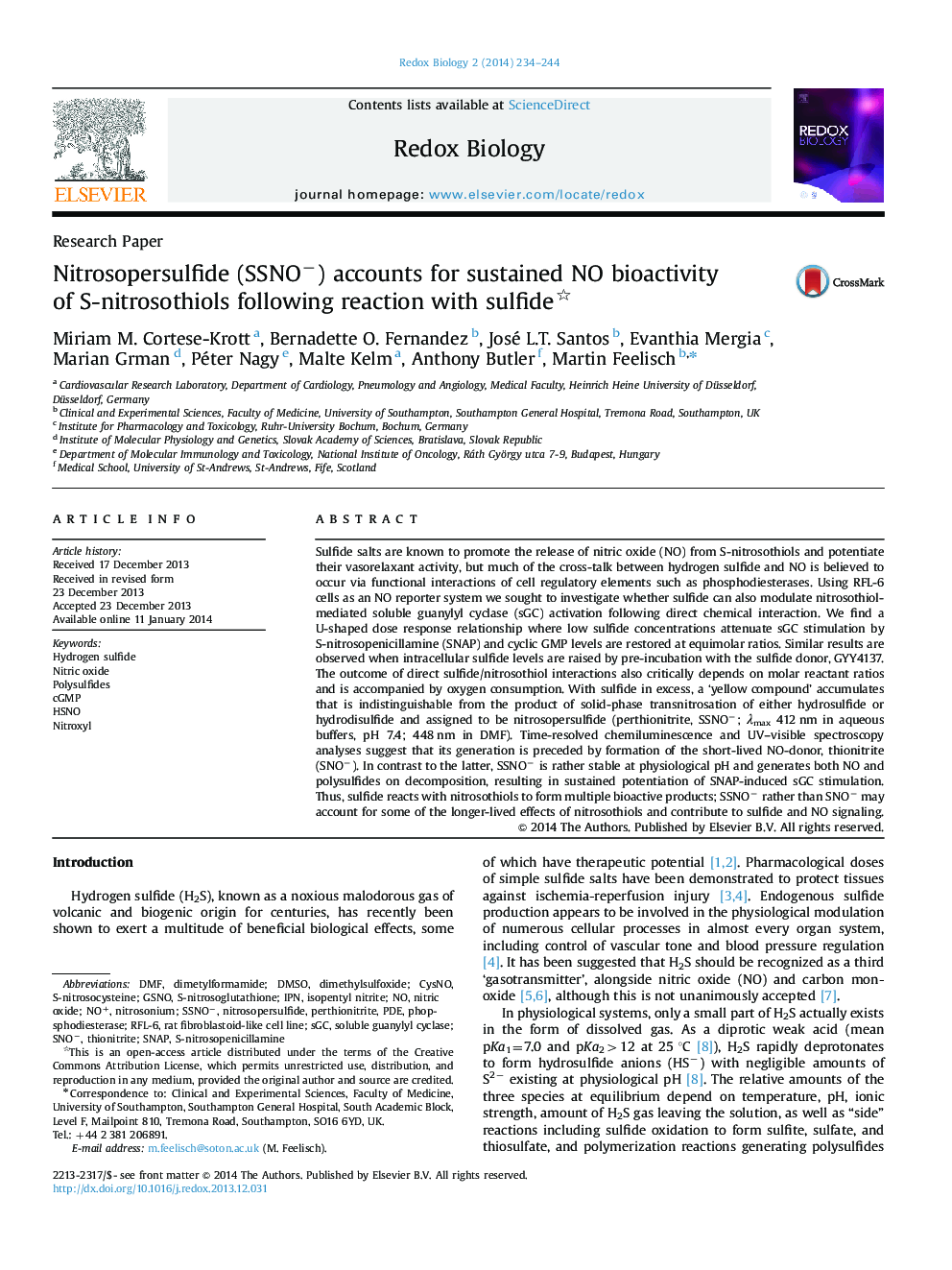| Article ID | Journal | Published Year | Pages | File Type |
|---|---|---|---|---|
| 1923019 | Redox Biology | 2014 | 11 Pages |
•Sulfide modulates the bioactivity of nitrosothiols in a concentration-dependent manner.•Nitrosopersulfide anions (SSNO−) accumulate at high sulfide/RSNO ratios.•SSNO− releases NO and is surprisingly stable in the presence of reduced thiols.•SSNO− is a potent activator of soluble guanylyl cyclase.•SSNO− is likely to contribute to NO and hydrogen sulfide/polysulfide signaling.
Sulfide salts are known to promote the release of nitric oxide (NO) from S-nitrosothiols and potentiate their vasorelaxant activity, but much of the cross-talk between hydrogen sulfide and NO is believed to occur via functional interactions of cell regulatory elements such as phosphodiesterases. Using RFL-6 cells as an NO reporter system we sought to investigate whether sulfide can also modulate nitrosothiol-mediated soluble guanylyl cyclase (sGC) activation following direct chemical interaction. We find a U-shaped dose response relationship where low sulfide concentrations attenuate sGC stimulation by S-nitrosopenicillamine (SNAP) and cyclic GMP levels are restored at equimolar ratios. Similar results are observed when intracellular sulfide levels are raised by pre-incubation with the sulfide donor, GYY4137. The outcome of direct sulfide/nitrosothiol interactions also critically depends on molar reactant ratios and is accompanied by oxygen consumption. With sulfide in excess, a ‘yellow compound’ accumulates that is indistinguishable from the product of solid-phase transnitrosation of either hydrosulfide or hydrodisulfide and assigned to be nitrosopersulfide (perthionitrite, SSNO−; λmax 412 nm in aqueous buffers, pH 7.4; 448 nm in DMF). Time-resolved chemiluminescence and UV–visible spectroscopy analyses suggest that its generation is preceded by formation of the short-lived NO-donor, thionitrite (SNO−). In contrast to the latter, SSNO− is rather stable at physiological pH and generates both NO and polysulfides on decomposition, resulting in sustained potentiation of SNAP-induced sGC stimulation. Thus, sulfide reacts with nitrosothiols to form multiple bioactive products; SSNO− rather than SNO− may account for some of the longer-lived effects of nitrosothiols and contribute to sulfide and NO signaling.
Graphical abstractFigure optionsDownload full-size imageDownload as PowerPoint slide
